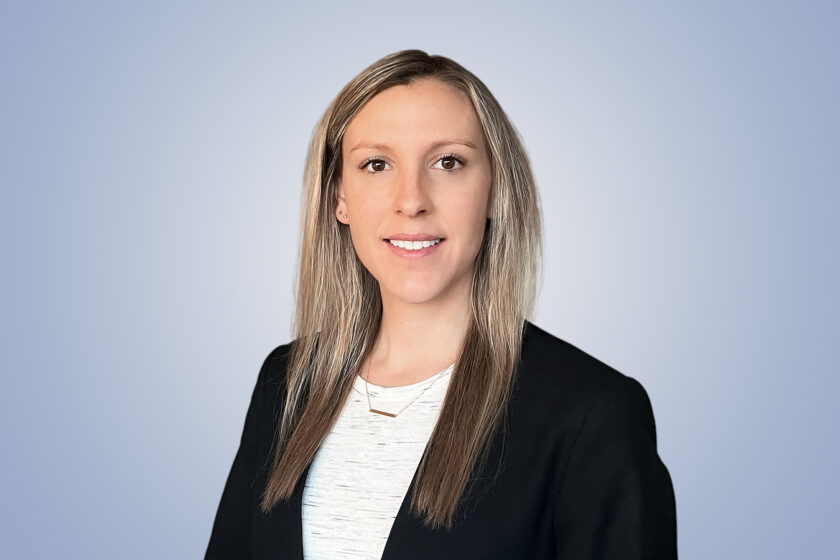News & Insights
Navigating New York City’s Local Law 97: a guide for building owners
This article shares what building owners need to know about NYC's Local Law 97, including what it is, who is affected, strategies for achieving compliance, where to go for financial resources, and how to get started.

New York City’s Local Law 97, which is part of the larger Climate Mobilization Act passed in 2019, is a future-forward move to address decarbonization at the city level. Buildings account for approximately two-thirds of greenhouse gas (GHG) emissions in New York City, and Local Law 97 builds on previous legislation targeting energy use in buildings. This article shares what building owners need to know about Local Law 97, including what it is, who is affected, strategies for achieving compliance, where to go for financial resources, and how to get started.
What is Local Law 97 (and why does it matter)?
Local Law 97 applies to buildings over 25,000 square feet within New York City. This encompasses about 50,000 buildings across the city, including commercial, residential, institutional, and mixed-use buildings. Starting in 2024, the law sets new GHG intensity limits for these buildings. These limits become more strict in 2030. The aim is to help achieve a 40% reduction in citywide emissions by 2030 and an 80% reduction by 2050 from the baseline levels measured in 2006.
Buildings that exceed these limits face significant fines. This creates a financial incentive for building owners to invest in decarbonization, energy efficiency, and other green initiatives. There are practical actions building owners can take to lower their building’s carbon emissions and reduce penalties, and the city is offering exemptions, extensions, and technical and financial resources to qualified owners. In addition, there are long-term benefits to taking action, including optimizing building performance, reducing utility costs, improving local air quality, and raising property value.
Which buildings are most impacted by Local Law 97?
Decarbonization for Local Law 97 can be particularly challenging for certain types of buildings:
- Older buildings often have infrastructure that does not lend itself to cost-effective clean energy retrofits. This includes steam heating, asbestos, limited electrical infrastructure, poor insulation, and lack of available space and automated controls for new equipment. For landmarked buildings or those in historic districts, there are additional regulations that can limit the extent of structural and envelope changes, complicating compliance efforts.
- Larger buildings commonly have more complex systems and higher energy demands. Upgrading these systems to be more energy-efficient can be technically intricate. Understanding and optimizing the occupancy and energy usage patterns in larger buildings, which often have a mix of residential, commercial, and possibly industrial spaces, adds an additional layer of complexity. Owners of large commercial buildings with multiple tenants can benefit from energy-aligned leases that help shift some energy efficiency responsibility to those who actually control the fit-out and occupant behavior within these spaces.
- Multi-family buildings often operate on tight budgets, making it difficult to invest in substantial upgrades without impacting rent prices. In addition, implementing energy-saving measures often requires changes in tenant behavior, which can be challenging to achieve and monitor. Multi-family buildings with affordable rent regulations governing 35% or more of their housing units can pursue a less stringent prescriptive compliance path under LL97.
- Hospitals are high energy users due to their 24/7 operation, specialized equipment, and stringent space-conditioning requirements for patient care. Upgrading systems without disrupting operations can be a major challenge. For this reason, hospitals and other critical facilities with life-saving functions are among the building types that are permitted to apply for adjustments to their LL97 greenhouse gas emissions intensity limits.
- School buildings, especially older ones, face challenges similar to other older buildings with the added complexity of balancing upgrades with educational schedules, managing budgets, and ensuring a safe, conducive learning environment. Public schools, like other city-owned properties, do not face individual GHG emissions intensity limits but must contribute to an accelerated 40% reduction in emissions from all city government operations by 2025 and a 50% reduction by 2030, relative to a 2005 baseline.
For building owners and operators, navigating these complexities not only involves immediate action but also strategizing for long-term sustainability and cost effectiveness. It’s a substantial task, but newly proposed rule changes and incentives will make it easier if they are approved.
What strategies can help achieve Local Law 97 emissions targets?
The big win: electrification
Electrification is a critical strategy that involves the shift from fossil fuel-based systems to electricity-powered ones. This includes upgrading boilers and other HVAC systems to electric heat pumps that can tap into increasingly clean renewable energy sources, significantly reducing a building’s carbon footprint. It offers sustainability, long-term cost effectiveness, and potential resilience against infrastructure failures if combined with on-site renewable sources and energy storage.
However, the process isn’t straightforward. In many instances, direct 1:1 replacements for existing equipment aren’t yet available. Upgrading the existing utility service for increased electrical loads can be complex and costly. Heat pumps, the most energy-efficient and cost-effective electric-powered replacement for most fossil fuel HVAC and service hot water systems, can require extensive new vertical and horizontal refrigerant piping throughout the building.
The proposed new rules for LL97 offer considerable incentives for early electrification, including a negative GHG emissions coefficient – the number that translates a particular energy source into tons of GHG – for electricity that is used to supply new heat pumps that replace fossil fuel systems. This incentive would be doubled for owners taking action before 2026.
For buildings unable to immediately implement full electrification, consulting engineers can develop a phased decarbonization strategy. This approach evaluates electrification as part of a multi-tiered plan to be implemented gradually. Ideally, a phased strategy will start with load reduction measures such as building envelope improvements and water-saving plumbing fixtures that can reduce the required size and complexity of the new heat pumps.
Blended approaches and hybrid heating solutions
Buildings can reduce emissions without fully transitioning to electric systems. Hybrid heating solutions incorporating air-source heat pumps can be designed to operate efficiently under certain conditions, then switch to fossil fuel equipment to manage loads.
Consulting engineers can determine the most effective hybrid solution tailored to the building’s specific requirements and the feasibility of different approaches for a building’s unique characteristics and constraints.
Working with what’s already there: optimize and monitor existing systems
Retro-commissioning (or RCx) is a systematic process for fine-tuning building systems to restore optimal operation. After several years of operation, it’s common for multiple uncoordinated changes to be triggered by construction projects, changes in building use and occupancy, repairs, maintenance (or a lack of maintenance), or overrides in reaction to complaints. This can inadvertently lead to inefficient and ineffective building system operation. RCx finds and addresses these gaps in performance.
RCx can result in substantial savings with relatively small expenditure. For example, many HVAC issues can be resolved by simply correcting faulty or outdated control settings, updating the sequence of operation programming, revising setpoints, switching systems from manual back to automatic operation, or making minor repairs. One way to catch these problems before they significantly impact energy use is to install real-time remote monitoring and control systems.
Verify accurate building area measurement to avoid fines
No matter which strategies building owners use to decarbonize, ensuring the correct measurement of a building’s gross floor area (GFA) is vital. A building’s GFA can differ by as much as 15% from its gross square footage (GSF), a more widely understood area measurement that is used for many other purposes such as property tax assessments.
The GHG emissions intensity limits and the fines under Local Law 97 for exceeding those limits are calculated based on GFA, and inaccuracies can lead to erroneous limits and fines for noncompliance. Particularly in older buildings, where records may be outdated or inaccurate, a detailed reassessment of the building’s square footage is recommended to ensure compliance.
Owners may need to use multiple strategies to avoid fines. Consulting engineers can help develop multi-layered strategies that can be implemented over time to achieve the best results.
What are the financial implications for clients who are working towards compliance?
There are funding sources available for business owners working towards compliance with regulations like New York City’s Local Law 97. These financial aids come in various forms, such as grants, tax incentives, low-interest loans, and rebate programs, to offset the costs of upgrades required for meeting environmental and energy efficiency standards. Here are some potential sources for building owners to know about:
- Government programs and incentives: Programs like NYSERDA (New York State Energy Research and Development Authority) provide financial assistance for energy efficiency projects. NYC Accelerator, which provides technical assistance and training to building owners and operators, can also make connections to financial services.
- Tax credits and deductions: Tax incentives, such as deductions for energy-efficient improvements, can provide significant savings. The IRS, for example, has provisions like the Energy Efficient Commercial Buildings Deduction (Section 179D) and Energy Efficient Home Improvement Credit (Sections 25C and 25D).
- Utility rebates: In many New York City neighborhoods, the demands of growth and electrification are exceeding the capacity of the existing gas and electricity infrastructure. As a result, the regional utility companies offer rebates for implementing energy-saving measures. These can include rebates for installing energy-efficient lighting, HVAC systems, and other equipment. Find out more about programs from Con Edison and National Grid.
- PACE loans: Property assessed clean energy (PACE) is a financing structure in which building owners borrow money for energy efficiency, renewable energy, or other projects and make repayments via an assessment on their property tax bill. The financing arrangement then remains with the property even if it is sold, facilitating long-term investments in building performance.
Each program has its own eligibility criteria, and building owners should thoroughly research and consult with financial advisors or program administrators to understand the specific requirements, benefits, and application processes for these funding sources.
Starting points for building owners for compliance with Local Law 97
- Conduct a thorough building measurement: Confirm the accurate gross floor area (GFA) of the building. Inaccuracies can lead to miscalculation of emissions limits and potential fines.
- Understand the gap between your building’s performance and the allowable limits: Evaluate how Local Law 97 specifically impacts the building based on its size, occupancy, age, and current energy usage. Identify the gap between its current GHG emissions intensity and legislated maximum.
- Develop a plan to bridge the gap: Develop a decarbonization strategy with short-term and long-term objectives for reducing carbon emissions in line with the law’s requirements. Consulting engineers can work with you to develop strategies tailored to your specific context and needs.
- Run a cost analysis and gain access to available resources and funding: The decarbonization plan needs to evaluate capital costs, fines for non-compliance, availability of incentives, operational savings through decreased energy usage, reduced maintenance costs, and overall tenant comfort.
- Determine whether your building qualifies for an adjustment or other hardship consideration: If your building is a critical facility, includes affordable housing units, is owned by a nonprofit organization, is landmarked, or faces financial hardship or an unexpected or unforeseeable event that impacts its ability to comply with LL97, it may qualify for one of several penalty mitigation opportunities included in the proposed new rules. Most of these opportunities require the owner to make good faith efforts toward compliance.
- File your building emissions report accurately and on time. Each building will have to file a building emissions report with the NYC Department of Buildings that has the building area calculations, utility data, and where the building is in relation to the threshold. Building owners need to file annually by May 1st.
Need help in navigating NYC Local Law 97 for your building? EME Group can provide expert guidance on the complex aspects of the law and help you develop compliance strategies for your unique context. We can also help with building measurements, decarbonization plans, cost analysis, and can compile your building emissions report and file on your behalf. Getting help from a qualified consulting engineer can save you time and money. Contact one of our experts below.

Neville Burrows, PE, LEED AP, BEMP, CEM, CPMP
Neville Burrows leads a group of engineers comprised of building energy simulation experts, energy auditors, and energy analysts. He is deeply experienced in helping building owners navigate decarbonization issues. Neville serves as a Principal for EME Group. Contact him at [email protected] .

Timothy Juliana, PE, CMVP, CHFM
Timothy Juliana leads our energy services group in New York providing energy analysis, auditing, RCx, modeling, and facility management services for a wide range of facility types. Tim serves as an Associate Vice President and Senior Engineer for EME Group. Contact him at [email protected].

Lauren Ray, PE
Lauren Ray specializes in helping New York City buildings decarbonize and achieve energy efficiency in their systems. Lauren has a Bachelor of Science in Mechanical Engineering and serves as an energy engineer for EME Group. Contact her at [email protected].